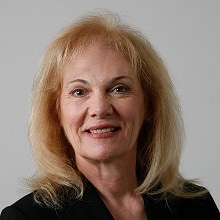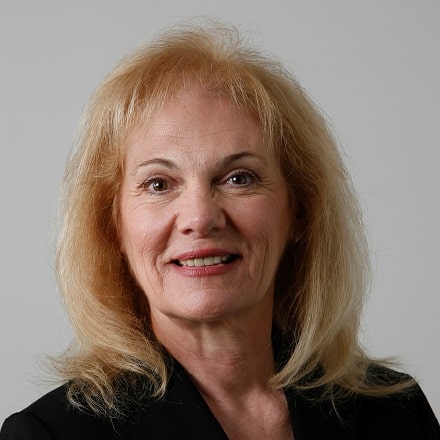Inside Angle
From 3M Health Information Systems
CMS proposed E/M changes: Fair or not?
There has been an outcry about the proposed E/M changes CMS recently brought to the industry for comment. Let’s take a close look at what CMS proposes:
- Lifting restrictions on the home E/M visit criteria. The patient does not need to be confined to home to be eligible nor does the medical necessity of the POS need to be documented.
- Removing the prohibition on billing same-day visits by different providers in the same group and specialty.
- Changes would only apply to CPT 99201-99215 (office or outpatient visits), allowing providers to choose either MDM or time to determine the proper E/M level. This allows providers in specialties to document the factor(s) most germane to the nature of their clinical practice. This also reduces the standard of recording history, exam and MDM since providers can choose to document the data most important to the visit.
- Removing the prohibition of allowing time to be used as the governing factor in selecting the proper E/M visit code. Currently, time is only used when it accounts for more than 50 percent of provider/patient encounter.
- Allowing providers to “simply review and verify certain information in the medical record that is entered by ancillary staff (or the beneficiary) rather than re-entering it.”
- Possibly creating new G codes to be used by primary and specialty care providers to represent the complexity inherent in a visit. Alternatively, CMS is also considering the use of the “patient relationship” modifier enacted in 2015 under MACRA.
- Creating a multiple procedure payment adjustment that would recognize efficiencies realized when E/M visits are furnished in conjunction with procedures.
- New E/M codes specific to podiatry.
- Reducing payment for E/M services submitted with modifier 25 when the service is performed on the same day as a zero global day procedure.
The proposal that is garnering the most reaction is the suggestion to modify provider reimbursement for the following outpatient E/M codes:
Established Patient
- Level 1, current payment $22*, proposed payment $24**
- Level 2, current payment $45*, proposed payment $93**
- Level 3, current payment $74*, proposed payment $93**
- Level 4, current payment $109*, proposed payment $93**
- Level 5, current payment $148*, proposed payment $93**
New Patient
- Level 1, current payment $45*, proposed payment $44**
- Level 2, current payment $76*, proposed payment $135**
- Level 3, current payment $110*, proposed payment $135**
- Level 4, current payment $167*, proposed payment $135**
- Level 5, current payment $172*, proposed payment $135**
- Current Payment for CY 2018
**Proposed Payment based on the CY2019 proposed relative value units and the CY2018 payment rate
My take
The first nine points above are good news for providers. Long overdue in my humble opinion, especially since the advent of the EHR E/M documentation template that demanded an unnecessary volume of relatively meaningless data for most encounters. This should save physicians time and reduce documentation complexity. And since CMS is increasing the reimbursement values of the first three E/M levels, theoretically some providers will benefit.
I like the idea that CMS is going to either create a new G code or use a current modifier to better represent complex patient visits. CMS will track this data and hopefully increase reimbursement for highly complex care when it is appropriate and necessary in the outpatient setting.
Industry observers are publishing articles documenting medical specialists’ dissatisfaction, including criticism of the proposed new E/M reimbursement—an increase for levels 1-3 and decrease for levels 4-5 (in the outpatient setting). In a recent article in The Hill, titled “One-size-fits-all payment approach won’t work for time spent with patients” by Daikh and Palmer (both specialty society executives), the authors speculate that if CMS pays all providers the same for the same outpatient E/M services, access to medical specialists will be “dangerously” impacted. Why? Because no one will want to become a specialist since they are not paid enough to manage complex patients. The article suggests it will be nearly impossible to get an urgent visit with a specialist if the E/M reimbursement changes go into effect.
I disagree with that assumption based on my experience as a nurse, family member of a patient and as a patient myself. Getting a new patient appointment with a specialist now or last year or ten years prior was nearly impossible because specialists fill their schedules seeing the chronic patients they treat every three, six or twelve months in follow-up. The repetitive visit pattern makes it nearly impossible for a new patient to be seen urgently unless their referring provider is willing to intervene with the specialist and communicate the need for the new patient visit.
CMS feedback comments
In reading some of the 1,546 comments to date, I found that many commenters thank CMS for the initiative. One that resonated was posted by a specialist, Christian Cabrera Kang, MD, a neurologist in Atlanta, Georgia. Dr. Cabrera-Kang is concerned that specialty providers may tend to avoid complex patients due to lower reimbursement. Just as CMS is aware that many level 4 and level 5 services are currently upcoded and improperly reimbursed, it is my hope they will create a mechanism to properly reimburse those visits that deserve to be. If a subset of ICD-10 diagnosis codes or code combinations can be identified that represent the most complex patients based on prior claims, it could be a useful claims auditing tool under the proposed system, should it be adopted. I hope those cases that are truly highly complex would reimburse at the Level 3/4/5 payment plus X dollars.
In my many years of experience in claims auditing, I am glad I no longer see documentation that consists of “no change” as the entire E/M note. However, I still see Level 4 charges for follow-up visits to review completely normal lab results that could have been telephoned to the patient by ancillary staff. If nothing comes of the proposal in its current form, CMS has the industry focused on E/M issues again after a 21-year hiatus. Let’s hope improvements will be made. Digital records demand it.
Barbara Aubry is a senior regulatory analyst for 3M Health Information Systems.


